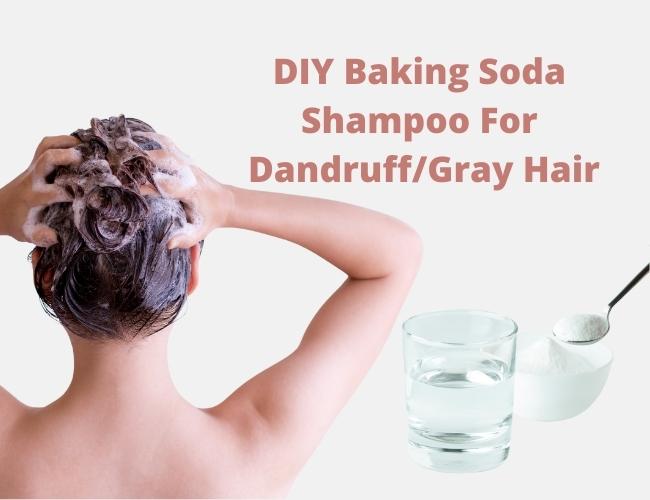Hair dye removal is not a one-size-fits-all process. I find that the method that works best depends on the type of dye used, the color, how long it has been in your hair, and the condition of your hair. It needs to be done properly so that the hair doesn’t get damaged.
Hair Dye Removal
Changing your hair color can be fun and exciting, but sometimes the results don’t go as planned. Maybe the shade turned out darker than expected, it clashes with your skin tone, or you miss your natural color. In these cases, many people look for ways to remove or fade hair dye safely.
Removing color incorrectly can cause dryness, brittleness, and breakage, so it’s important to choose a safe approach.
In this guide, I will cover everything from at-home DIY methods to professional salon treatments, along with aftercare advice and prevention tips to avoid future hair color mishaps.
Hair Dye Types
Knowing what type of dye you used is the first step in figuring out how to remove it.
Temporary Dye: Temporary colors coat the outside of your hair and usually last only 1–2 washes. They don’t penetrate the cuticle, making them the easiest to remove. Often, a single clarifying shampoo wash is enough to strip them away.
Semi-Permanent Dye: These dyes sit on the surface of your hair but cling more firmly than temporary colors. They last around 6–12 washes, depending on hair porosity. Fading requires stronger shampoos or mild removal methods.
Demi-Permanent Dye: These penetrate deeper than semi-permanent dyes but don’t permanently alter the hair’s natural pigment. They last 20–28 washes and can be stubborn to remove, often requiring professional removers or multiple home treatments.
Permanent Dye: This type changes your natural pigment by opening the cuticle and depositing color molecules inside the cortex of the hair shaft. Permanent dyes are the hardest to remove. They usually require professional stripping, bleaching, or color correction to lift the artificial pigments.
Factors That Affect Dye Removal
Not every hair type reacts to dye removal in the same way. The following factors influence results:
Hair Porosity and Texture
Highly porous hair (from previous bleaching, heat damage, or naturally coarse strands) absorbs dye quickly and also holds onto pigment more stubbornly. Finer, smoother hair often releases dye more easily.
Time Since Dyeing
Freshly applied dye is easier to remove because the molecules haven’t fully settled into the hair shaft. The longer the dye sits, the more it oxidizes, becoming more permanent and harder to lift.
Color Choice
Dark shades such as black, deep browns, or vibrant reds are notoriously difficult to strip because the pigment molecules are large and heavily saturated. Pastels and lighter colors usually fade faster.
Previous Treatments
If your hair has been chemically treated (bleached, relaxed, permed, or colored multiple times), it may be more fragile and prone to damage when using strong removal methods. Extra care is needed.
At-Home Methods for Removing Hair Dye
At-home methods can be effective for fading or removing semi- and demi-permanent dyes, but they are less successful with permanent color.
Clarifying Shampoo and Baking Soda
Clarifying shampoos contain stronger detergents than regular shampoos, designed to strip away buildup. When combined with baking soda, which has alkaline properties, it helps break down and lift dye molecules.
Step-by-step:
- Mix one part clarifying shampoo with one part baking soda.
- Apply the mixture to damp hair and massage thoroughly, ensuring even coverage.
- Leave on for 5–10 minutes before rinsing with warm water.
- Condition hair immediately afterward to restore moisture.
Works best on semi-permanent dyes or fresh color. Repeated use may leave hair dry and brittle, so limit to 2–3 times per week.
Anti-Dandruff Shampoo and Vitamin C Paste
Anti-dandruff shampoo contains strong surfactants (like zinc pyrithione) that help break down color. Vitamin C is acidic and helps oxidize the dye molecules, loosening them from the hair shaft.
Step-by-step:
- Crush 10–15 vitamin C tablets into a fine powder.
- Mix the powder with a generous amount of anti-dandruff shampoo until it forms a paste.
- Apply evenly to damp hair and massage thoroughly.
- Cover your head with a shower cap and leave for 30–60 minutes.
- Rinse thoroughly and apply a deep conditioner.
Particularly good for bright colors like blues, pinks, and purples, and for fading semi-permanent dyes. It can leave hair feeling dry and may not completely remove darker permanent dyes.
Dish Soap Method
Dish soap is formulated to cut through grease and oil. It also strips away color molecules when used sparingly on hair.
Step-by-step:
- Mix a small amount of dish soap with your regular shampoo.
- Lather into hair and leave for 5 minutes.
- Rinse well and follow with a rich conditioner.
Works for fading fresh dye or stubborn semi-permanent colors. Very drying, can strip natural oils, and may make hair feel rough. Only use occasionally.
Natural Remedies
Olive Oil or Coconut Oil
Warm oils help soften the cuticle and loosen dye molecules while moisturizing the hair. Apply warm oil generously, cover with a shower cap, and leave overnight. Wash out with shampoo in the morning. This method is gentle but slow.
Lemon Juice Rinse
The acidity of lemon juice helps lighten dye gradually. Apply lemon juice to hair and sit in the sun for 15–20 minutes before rinsing. Works best on light dyes and natural highlights.
Vinegar Rinse
Mix equal parts white vinegar and water, apply to hair, and leave for 15–20 minutes before rinsing. The acidic nature helps fade color while balancing scalp pH.
Commercial Color Removers
Products like Color Oops and L’Oréal Colorista Remover are designed to shrink artificial dye molecules so they can be rinsed away.
Follow product instructions carefully. Most require applying the solution to dry hair, leaving it on for a set time, and rinsing thoroughly.
They are much stronger than home remedies. Work on semi- and many permanent dyes. Strong odor, can dry hair, and results may vary depending on the brand and dye used. Sometimes the color may re-oxidize if not washed out thoroughly.
Salon & Professional Methods
For permanent dyes or when at-home methods fail, salon treatments are the safest and most effective.
Color Correction Treatments: A professional colorist uses advanced removers and toners to adjust or neutralize unwanted shades. This can help even out patchy results.
Professional Dye Strippers: These are stronger versions of at-home removers, carefully applied to minimize damage. They target artificial pigments without completely bleaching natural hair.
Bleaching and Toning: Bleaching lifts both natural and artificial pigments. After bleaching, a toner is used to balance the shade and neutralize brassiness. This method is effective, but also the most damaging.
If your hair has been dyed with black or red permanent dye, if your hair is already damaged, or if you want to achieve an even base color before dyeing again, a salon visit is the best choice.
Aftercare for Hair Post-Removal
Hair dye removal can be harsh, so proper care afterward is crucial:
Deep Conditioning Treatments: Use a hydrating hair mask 2–3 times per week. Ingredients like shea butter, argan oil, and aloe vera restore lost moisture.
Protein Masks: Hair is made of keratin (protein), which can be weakened by dye removal. Protein masks or bond-repair treatments help strengthen and rebuild the hair structure.
Avoid Heat Styling: Limit the use of flat irons, curling irons, and blow dryers for at least two weeks to give your hair time to recover.
Leave-in Oils and Serums: Apply lightweight oils (like argan, jojoba, or coconut oil) to seal in moisture and prevent frizz.
Common Mistakes to Avoid
Over-Washing Hair: Shampooing too frequently strips away natural oils, making hair dry and brittle.
Mixing Multiple Removal Methods at Once: Combining harsh methods (like bleach with vinegar) can cause chemical reactions that severely damage hair.
DIY Bleaching Without Knowledge: Bleach can quickly turn hair patchy, brassy, or even cause breakage if misused.
Expecting Instant Results: Some dyes require multiple treatments to fade completely. Trying to rush the process can cause unnecessary damage.
Prevention Tips for the Future
Do a strand test before dyeing. Test the dye on a small section of hair to see how it reacts before committing to your whole head.
Choose semi-permanent if unsure. Semi-permanent dyes fade faster and are less damaging, making them a safer choice if you’re experimenting with new shades.
Use color-protecting shampoos and conditioners. These products lock in color and prevent fading, helping your chosen shade last longer.
Schedule touch-ups instead of layering dye. Applying dye over and over to the entire head leads to buildup. Touching up only the roots ensures a more natural and even result.
My Final Thoughts
Removing hair dye can be tricky, but with the right method, patience, and proper care, it’s possible to safely return to your natural shade or prepare your hair for a new color.
At-home methods like clarifying shampoo, vitamin C paste, and oils can fade semi-permanent dyes, while stubborn permanent colors usually require professional removal.
If you are interested in hair care and skin care, consider subscribing to my newsletter. Additionally, follow me on Pinterest to discover more amazing pins.








